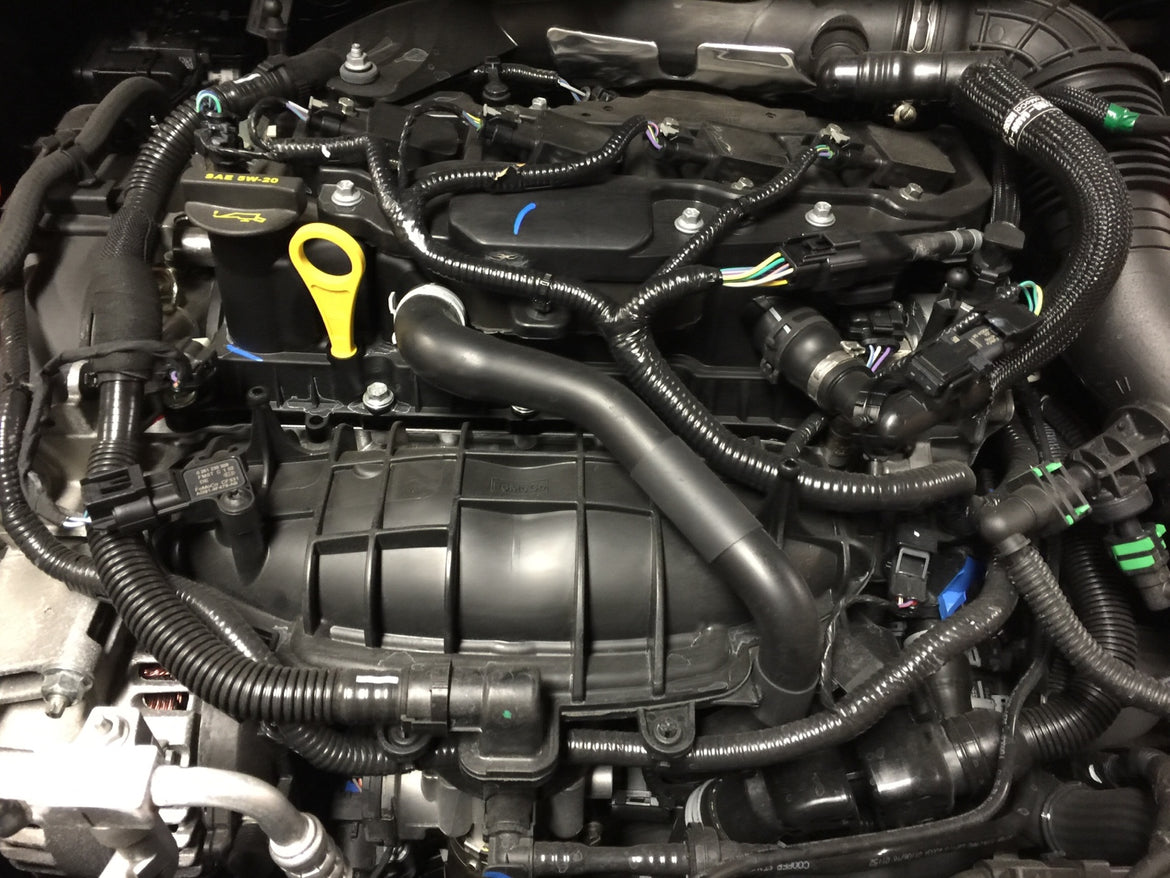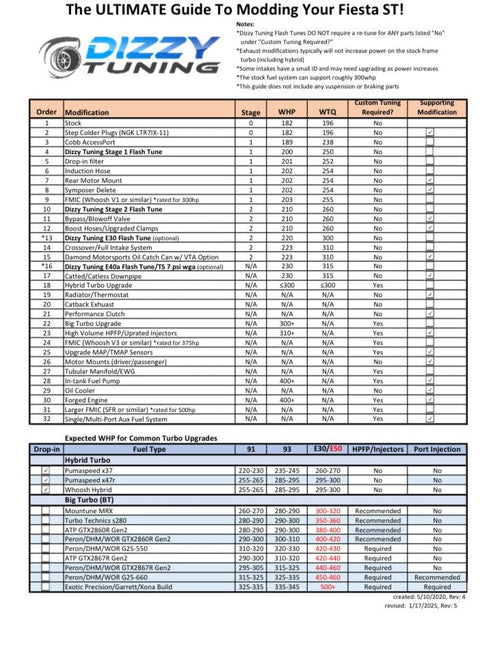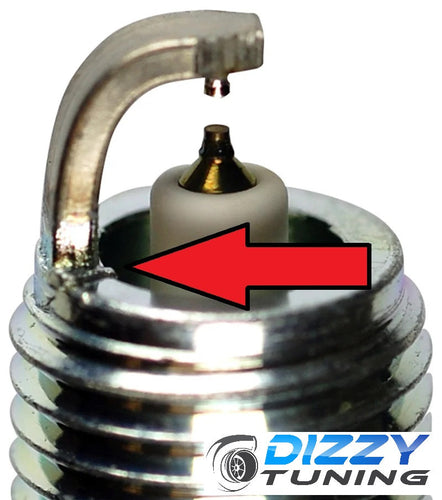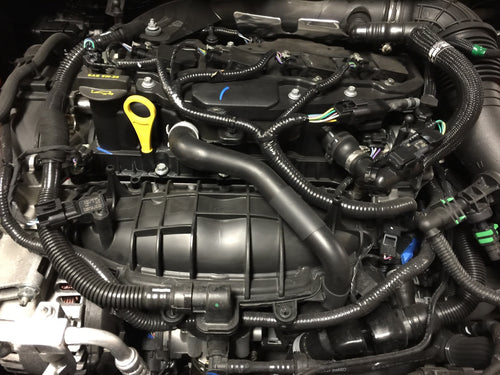
Fiesta ST - 1.6L Ecoboost PCV System
- on January 25, 2024
- Categories: Tech Articles
In this blog entry we will discuss the PCV system, or Positive Crankcase Ventilation system. Crankcase ventilation is typically not so much of an issue at oem power/boost levels, as the factory engine does already include such a system to handle excess pressures in the crankcase and trap any oils in the process. But let’s back up for a second and go over exactly what Positive Crankcase Ventilation is, and why it can be so important (especially on a high-powered turbocharged engine).
As the pistons inside the engine travel up and down in the cylinders, this creates a lot of air movement and air displacement underneath the pistons (in the crankcase). In a perfect world, the pressure should stay relatively constant, because as two pistons are traveling up the cylinders (creating a vacuum) the other two pistons are traveling down the cylinders (equalizing the pressure). However, you will always get residual pressure that can leak past the piston rings under boost, etc. And the more boost you run, the higher this pressure in the crankcase can become. A common occurrence on the DISI Mazdaspeed engine was the dipstick popping out of the dipstick tube under high boost (if proper crankcase ventilation was not established, or the oem pcv valve failed).
Let’s take a look at the factory system on the 1.6L Ecoboost and see how it was designed. I'll also mention beforehand that any venting of the valve cover is also venting the crankcase, as there are large cavities that run down the block, connecting both the upper (valve cover) and lower (crankcase) areas of the engine. Another function of these channels is for oil drain back.

There are two main pathways for pressure to be evacuated from the crankcase. The first is on the left-hand side of the valve cover and is connected to the intake manifold. This is very common among auto manufacturers and the idea is that the vacuum applied from the manifold will slowly draw pressure from the crankcase.

But what happens when I get into boost? Won't I pressurize my crankcase? Not necessarily. There is an internal check valve in the valve cover that will only allow air to flow out of the valve cover and not into it. However, you can see in the photo below that the check valve is plastic and could fail at high boost pressures. For this reason, we always recommend running an external check valve on this line, like the UPR unit shown.

The other pathway that vents the crankcase pressure is via a baffle plate bolted to the block (under the intake manifold). There is a series of baffles inside to trap any oils, and then this hose passes through the valve cover and connects to the intake tube.

Why does the hose pass through the valve cover? There is another baffle hidden underneath, and this catches any excess oil in the hose, and releases it back down into the oil pan. You can see the oil drain back ports below. So between the baffle on the block catching oil and the baffle under the valve cover catching oil, we do have somewhat of an oem "catch can" system, built into this vent hose.

Since this intake port connection is before the throttle plate, it does not see vacuum. In fact, this connection is actually used in conjunction with the other and allows for somewhat of a "cross-breeze' through the crankcase (similar to opening two windows in your house). Below is a diagram of what the pcv system is doing when the engine is under vacuum (idling/cruising). You can see that the intake manifold is pulling air from the valve cover. This causes air to be pulled from the lower crankcase, which is fed from the intake air filter, via the other PCV hose.

Under boost, this PCV hose does allow for excess pressure to be released from the crankcase. The air passing through the intake tube creates a venturi on the PCV hose and slowly draws air out. Since the other hose off the valve cover is blocked off (via the check valve), this is the only exit for crankcase pressure under WOT.
With all the above being said, why is this important for performance? Because we want to try to reduce the amount of oil that is pulled into the combustion chambers at WOT. This is why the baffle systems are in place. But it does not catch all of it, especially when you are at higher boost and power levels. Oil vapors that do get in the combustion chamber can cause misfires and detonation under WOT, which makes tuning for power very difficult.
One way we can eliminate this problem is with the use of an external catch can system. In my next blog, I will go into more detail about what catch can is recommended and where to place it. Happy Boosting!








